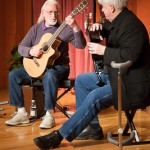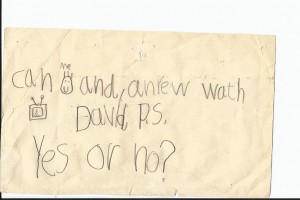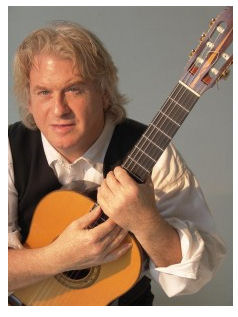As we prepare for the upcoming Kritzer Studio Recital and Classical Guitar Immersion I thought I would let you in on how I like to prepare for performances. I hope you find this blog helpful. Part of what will make this work is if you add your comments on some of the ideas that I’ll be throwing out there. So please go on this journey with me. And those participating in the upcoming Kritzer Studio Recital, (more on that in a few days) and/or Classical Guitar Immersion should find this helpful for your upcoming ‘moment on the stage’.
I hope to post every few days – I hope you’ll follow along and keep up….I know, you’re busy, so am I….
So let’s jump ahead. I’d like to ask you what you’d like to get out of your next performance, (and let’s say it’s a minimum of 8 weeks away, any shorter and I can only throw you a lifesaver, at best, and the closer the performance the smaller the flotation device). But let’s say you’ve just finished your performance, what could you realistically hope for? Go ahead. I’m looking forward to hearing your response! And if you could add one skill to that to your playing between now and your performance what would it be; vibrato? Clean slurs? Phrasing, (through dynamics and rhythm)? Left hand thumb placement? Tone? Accuracy, relaxation? Let me know that too – pick one!
Okay, so as to not waste any time let me make sure that you are not setting your technique practice aside. Often when we get ready for a performance we’ll sneak right over that which has provided us a steady and solid foundation.
So your assignment, if you should decide to take it:
- Practice 10 minutes of scales and arpeggios each practice day.
- Picture yourself just after your performance, what would you have liked to accomplish?
- What new skill (please see above) would you like to add to your skill set for this performance? (I’ll call these Secondary Skills).
Okay, here we go!
Scott
April 3rd, 2012 – in response to Charlie
I think I’ll respond to all posts through the addition of this blog. Your questions will drive this discussion! I’m going to be addressing Charlie’s questions here but you may be able to apply the same concepts.
Okay, now let’s talk a little bit about the categories of practice that we’ll briefly explore here over the next few months. I like to divide the guitar practice into 3 major categories called Primary Skills, Secondary Skills, Directives (SSD) Repertoire Practice Directives(RPD) and Performance Practice Directives (PPD). I’ll be delving a bit into the Secondary Skills in today’s posting and responding to Charlie’s questions.
The Primary Skills are the skills learned that are necessary to play the classical guitar with regards to positioning and movement forms, otherwise known as technique. Not something within the scope of this blog. If one is struggling with the basic technical demands of playing the guitar it will be difficult to perform with any sense of security or command.
Secondary Skills are those skills that can be acquired and can also be lost. I’ve experienced peaks in my ability to execute vibrato, tone, slurs, etc only to have them slip away. I guess I thought like many that once you have a skill it will always stay within your skill sets. I haven’t found this to be true.
Here’s a parital list of what I call Secondary Skills:
• Finger Independence (the ability to balance melody over accompaniment)
• Tone Production
• Expressive Tools (dynamics, rhythm, timbre)
• Left Hand Thumb Placement
• Slurs
• Vibrato
I recommend that at least twice a year a player should work on developing a new secondary skill. Consistent practice of a particular skill set over a 3 month period should insure that the skill is learned. Once a secondary skill set is acquired it can be practiced less frequently, say two weeks for every eight weeks of practice.
So Charlie’s new skill that he wants to develop is the ability to phrase. Phrasing is t two fold issue Charlie. Part one is developing skills regarding the expressive tools, (dynamics, rhythm and timbre). Part two is determining the phrasing in the music you’re playing and then applying the expressive tools.
I happen to know what your technique practice should be Charlie and we can be proactive by applying these skills to your scales and arpeggios. Take one of your scales and go from mp to fff to ppp and back to mp. You can also begin the scale slowly, speed up as you increase the volume and then as you come down in dynamics apply a nice retard. In your arpeggios (compound motion) you can do the same but using a subito dynamic change. I wouldn’t worry about timbre at this time though.
With regards to phrasing let’s take a few of the Repertoire Practice Directives. I would suggest working on conducting and singing one of your pieces. I would also employ the Counting Measures RPD. Determine if your piece is in a 4 or 8 measure phrase. Actually learn to count the measures as you play them. This takes about a week to be able to do – the following week simply notice the similarities of the music from phrase to phrase. Can you hear a moment in each phrase where the activity is at it’s greatest? Can you hear a moment when the phrase comes to a relative rest? Eventually you’ll be able to hear the relative activity and rest between the phrases and ultimately sections, giving you a map of how to move through the piece using the expressive tools mentioned above.
As mentioned before Charlie’s concern over memory is a very common one – Bacward Sectionals (play a piece from the last phrase to the first, by memory) and Left Hand Sequencing (the simple act of ‘noticing’ the left hand movements and fingerings while playing the piece very slowly) will help this issue greatly! But, you can wait until next month to apply those –
I hope that doesn’t sound too complicated. Please post any questions….
Thanks!
Scott
April 4th, 2012 – in response to Tom
Great work on the technique. Often we don’t feel the effect of notpracticing our scales and arpeggios for about 3 weeks. So good job Tom.
When working on expressive tools it’s always good to record oneself. Often we think we’re doing something drastic when in truth it’s not as dramatic as we hear. That’s not necessarily bad, just good to know you have much more room than you think. I remember one performance where, like you, it was my goal to be very expressive, using big dynamic contrasts, timbre, rhythm. “Wow”, I thought “I really laid it out there tonight”. After the concert an audience member told my playing was so wonderfully subtle. There you go.
Your more pressing issue is then the idea of feeling comfortable before the concert. So let’s think about this; what’s the worse that can happen? Perhaps you have such a bad memory issue that you have to cut the piece short? Okay, let’s say that’s happened. Now what would you do? Probably be bummed out but (especially knowing you Tom), you’d pick yourself up and reevaluate your process and likely even learn from the experience. And really, how likely is that to happen?
But understand, you will make mistakes, yes, everyone, (well almost everyone) does. So most importantly you want to make specific goals for your performance. Let’s use your example of being expressive. Great – now what would you be willing to give up to gain that? Maybe make a few mistakes that you wouldn’t normally? Perhaps, but that’s okay, you’ll learn tremendously by taking the calculated risk.
And let’s look at the past – a good example of what you can do. Last year at CGI you opened the program with Valse, Opus 8 by Barrios. And you nailed it! Holy cow Tom, how many great classical guitarists open with that work. Mike did an equally amazing job with the Allegroby the same composer. So from that you need to take a realistic look at what you are capable of!
So set that goal in stone Tom and apply the practice directives of Conducting, Counting Measures and the Performance Practice Directive of “Letting go to the Ridiculous” -make wildy exaggerated expressive gestures. You will be surprised at what you have within!!!
Acoustically yours,
Scott
April 5th, 2012
If you’re near 6 weeks to a performance here’s another concept that I suggest you apply. Practice like you want to perform and here’s what I mean by that: As you practice your piece you may experience a memory slip.
If you do, react as you would want to in performance – find the next spot in the piece and try to make that transistion smoothly. If you get distracted by some outside force (often this would happen when my kids would try to ask me a question) continue to play, as if you were performing, don’t stop.
Also, keep your guitar in tune. Start by tuning your instrument and if you find yourself out of tune while practicing attempt to ascertain which string is out of tune and if it’s sharp or flat. When you find a break in the music try to make the appropriate adjustment.
These are great skills to develop and are best done so first in practice.
Okay, happy preparation!
Scott
April 16th, 2012
Since perception is often our reality and our ears while practicing are not the best judges I think its time to start audio recording your pieces for the upcoming recital.
Record yourself and then after a day or two listen back and ask yourself what are the three top things you’d like to improve. Later, closer to our recital date we’ll talk about video recording and the differences between that and audio recording.
Remember, perfect practice makes perfect!
Scott
May 7, 2012
Now is a great time to set your performance tempos. Find a good metronome marking, (one where the music sings but you can execute the skills you possess). If you haven’t worked specifically on Secondary Skills then just make sure you can play at a tempo where the musical phrasing is in place, the rhythm and ‘feel’ is maintained. Play the piece at this new tempo for 1-2 weeks. You may need to push a bit at first to get these skills up but if you’ve been doing your slow practice they will come.
Okay – let me know how it goes!
Scott
May 8th, 2012
Performance preparation is best tackled in three different areas; Preparation, Goals, Attitude. Preparation is your practice. We’ve already talked a lot about that. Goals. If you don’t set a goal for your performance then the default usually goes like this:I’m going to play the best, no mistake, performance of this piece that has every been performed. Even on a subtle level this is what you are shooting for. Stop it – we’re all going to make mistakes so drop that noise. So let’s set some realistic goals. But remember, for every goal there is something you’ll need to give up. Tempo – maybe you want to make sure to control the tempo of the piece, eliminating some mistakes that may be made at a faster tempo. Good, now what are you going to give up? Maybe a little in terms of interpretation (if your tempo is under tempo a bit). Tone – good accurate tone is always a goal. What would you give up? Maybe speed. So set some goals!
Attitude. One of the big problems of performing is stage fright. Remember the equation from The Inner Game of Music, Performance=potential-interference. Being the focus of attention can cause you to become distracted from the task at hand. The way to stop this is to focus on something in your environment. If you’re walking down the street and you notice a group of people watching you it can be hard to ‘be natural’. Our fear of public humiliation runs deep and exists in a particular part of the brain. In the past we learned to deal with this situation, often in a less than mature manner. In fact, if you become embarrassed you can recall every embarrassing moment of your past. That’s in fact what happens when you experience performance anxiety. So how do you break it? Just focus your attention on something in your environment; a tree, the sound of traffic, the feel of your feet on the ground. In performance redirect your attention to the tone, the sound of the guitar or the red shoes in the front row. If you do this you’ll break the pattern and the effects of PA will be eliminated.
So, you can practice this while in public over the next few weeks. Let me know what you find!
May 28, 2012 – the last leg
Okay – the final week of preparation – here we go. Two things to work on; tempo and memory/security.
Tempo
Find your tempo. Pick the hardest passage and find the tempo at which you can play the passage. Now draw the tempo back just a notch to take performance anxiety into account.
Practice finding the right tempo by singing the rhythm of that passage. As you feel the pulse of the rhythm start the piece.
Memory and Security
Everything played at a very slow tempo – around half or less of the desired tempo for performance. I want you to work on a few things while doing this. First, watch your left hand fingers, just notice the sequencing from one pattern to the next. This could be challenging as this alone can cause memory challenges (which we want to eradicate). The slow tempo will as well. Also, watch your breathing and find points where you can relax the left and right hands. After shifts, when you’ve released two or more fingers from the fingerboard, where there is a rest in the rhythm…
Your Practice
Practice starting the piece in tempo as described above. Just play the first few measures. Then play the piece through once only at slow tempo as described above doing left hand sequencing, breathing and relaxing.
Next up…..the day of!
Scott









But let’s say you’ve just finished your performance, what could you realistically hope for?
Minimize memory slips.
And if you could add one skill to that to your playing between now and your performance what would it be?
Phrasing.
Okay, so as to not waste any time let me make sure that you are not setting your technique practice aside.
Uh-oh.
Great Charlie – yes, get back on that technique wagon. And I’d suggest super slow practice with range of motion with relaxation between strokes. Get that relaxation built into the hand.
Memory issues are usually one of the top concerns. Here are a couple of great practice directives to employ to solidify memory; Backward Sectionals and Left Hand Sequencing. Two weeks each – so that’s a month’s worth of work – get at it!
Developing the ability to phrase means placing dynamics and rhythmic alterations in the appropriate places. As with most skill sets I’d recommend doing that work each day in both technique and repertoire. So practice your dynamics, accerlandos and ritards in your scales (build that dynamic range). Get use to getting more volume and coming down to a pianissimo. Begin a scale a little slow, speed it up a bit and then finish with a ritard.
Now on the musical side you can practice the above with a piece but I’d recommend Counting Measures and Conducting. These practice directives will give you the idea of where the phrases begin and end, (usually in four measure groupings) as well as the high points of the sections and the entire piece.
You can assign each of these to a two different pieces. Okay Charlie – let us know how you progress. Report back in two weeks or less!
Thanks,
Scott
1. Practice 10 minutes of scales and arpeggios each practice day.
Not a problem – that is my daily habit.
2. Picture yourself just after your performance, what would you have liked to accomplish?
Be comfortable enough with the performance anxiety issues that some of the dynamics and phrasing that I am practicing can come through in performance.
3. What new skill (please see above) would you like to add to your skill set for this performance? (I’ll call these Secondary Skills).
I am focusing on clean slurs, especially in my Bach Prelude.
Tom